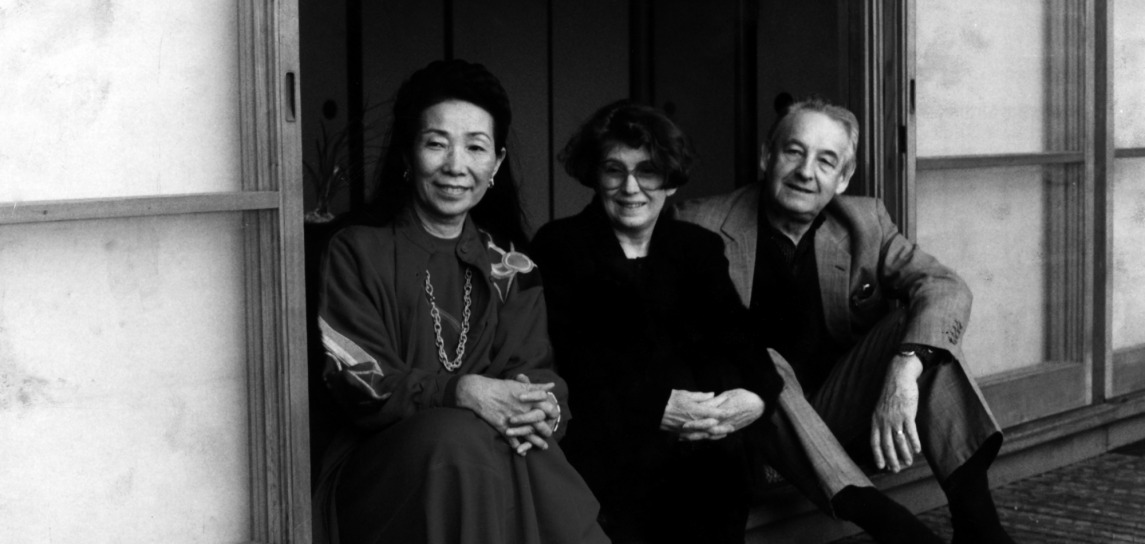Kyoto-Krakow Foundation
The materialization of the idea to build the Manggha Centre (now Museum) of Japanese Art and Technology was the result of a surprising chain of artistic inspirations, whose origins should be sought in Feliks Jasieński’s passion for collecting and generosity. In 1944, in Krakow under Nazi German occupation, parts of Jasieński’s collection were exhibited in the Cloth Hall Gallery, and that was when the nineteen-year-old Andrzej Wajda encountered Japanese art. The vision of the world that it offered spoke to the young artist with unusual power, opening up new horizons before him. Years later, in 1987, upon receiving the Inamori Foundation’s prestigious Kyoto Prize in Japan, granted to him in recognition of his lifetime achievement in film and theatre, Andrzej Wajda, together with his wife Krystyna Zachwatowicz, contributed the whole amount towards establishing the Kyoto–Krakow Foundation. Its objective was to erect a building in Krakow which would provide exhibition space for Feliks Jasieński’s collection.
The next link in the chain of events was doubtlessly the effort of Etsuko Takano, a great lover of cinema, from the start the general manager of the arthouse film centre called Iwanami Hall in Tokyo, where she showed Andrzej Wajda’s films. The acquaintance evolved into friendship and resulted in Ms Takano’s extraordinary commitment to the cause of the Kyoto–Krakow Foundation. Her inexhaustible energy, combined with her position in society and professional circles, enabled Etsuko Takano to form the Japanese Branch of the Foundation and enlist the cooperation of some prominent figures, notably Toshikuni Yahiro, President and Chairman of Mitsui (to chair the branch), Yoko Ohtake, Director of the Tokyo International Women’s Film Festival, who remains a devoted supporter of the Manggha Museum to this day, and the well-known author and journalist Chieko Akiyama. The Fundraising Organizing Committee launched collections all over Japan, during which tens of thousands of donors contributed over a million US dollars. The East Japan Railway Workers’ Union added another million, through the hands of its President, Akira Matsuzaki. Encouraged by such spectacular initiatives, the Japanese Government forwarded about three million dollars to the Foundation, from the Polish-Japanese Cooperation Fund.
The municipal authorities of Krakow and the local government of what was then Krakow Voivodeship (province) were another link in this chain. They shortlisted available sites and subsequently Voivode Tadeusz Piekarz and Mayor Józef Lassota allotted to the National Museum – free of charge – the site selected by Arata Isozaki. The world-famous architect gave his building design to the Foundation as a present, which made it possible to use all the funds raised for the construction. Seven years after Andrzej Wajda received the Kyoto Prize, the Manggha Centre of Japanese Art and Technology was opened to the public. This is how the goal that the Foundation set for itself at incorporation was accomplished.
During the first ten years, when the Manggha Centre (Museum from 2005 onwards) was a branch of the National Museum in Krakow, Andrzej Wajda and Krystyna Zachwatowicz’s Kyoto–Krakow Foundation changed its objectives, focusing increasingly on the proactive popularization of Japanese culture in Poland. Since 2005 – when the Manggha became an autonomous entity – the Foundation has continued to play an important role, primarily by supporting the Museum’s educational mission. The construction of the Japanese Language School building has been one of its major achievements during that period.
As a registered charity, the Kyoto–Krakow Foundation continues to support projects undertaken by the Museum, while the Founders’ engagement and the advisory functions of the Board of Trustees and the Executive Board are invaluable. The registered office of the Kyoto–Krakow Foundation is in the building of the Manggha Museum of Japanese Art and Technology.

